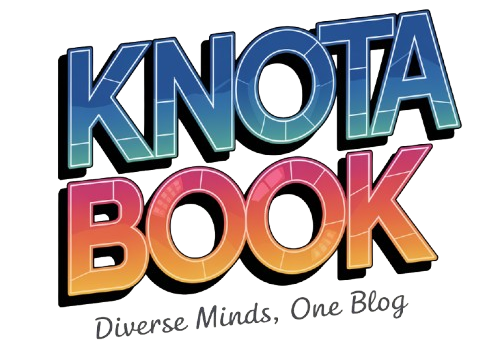EOPAs, or Educational Outcomes and Performance Assessments, are designed to provide students with a structured approach to mastering content and achieving academic success. The primary purpose of EOPAs study guides is to distill complex information into manageable segments, allowing learners to focus on key concepts and skills necessary for their assessments. These guides serve as a roadmap, outlining essential topics, learning objectives, and assessment criteria, which can significantly enhance a student’s understanding of the material.
By breaking down the curriculum into digestible parts, EOPAs study guides help students identify their strengths and weaknesses, enabling them to allocate their study time more effectively. Moreover, EOPAs study guides are not merely tools for rote memorization; they encourage critical thinking and application of knowledge. By integrating various learning strategies such as practice questions, case studies, and real-world applications, these guides foster a deeper engagement with the subject matter.
This multifaceted approach not only prepares students for exams but also equips them with the analytical skills necessary for future academic and professional endeavors. Understanding the purpose of these study guides is crucial for students who wish to maximize their learning potential and achieve their educational goals.
Key Takeaways
- EOPAs Study Guides are designed to help students understand the purpose and content of the exams they are preparing for.
- EOPAs Study Guides provide a comprehensive resource for students to review and practice the material covered in the exams.
- Effective study strategies, such as time management and active learning, can be developed using EOPAs Study Guides.
- EOPAs Study Guides can be incorporated into classroom instruction to supplement and reinforce the material covered in the curriculum.
- Collaborating with peers can enhance the utilization of EOPAs Study Guides through group study sessions and sharing of study tips and resources.
Utilizing EOPAs Study Guides as a Comprehensive Resource
Accommodating Various Learning Styles
These study guides often feature summaries of key concepts, detailed explanations, and illustrative examples that cater to visual, auditory, and kinesthetic learners alike. For instance, a study guide might include diagrams and charts to visually represent complex theories, while also providing written explanations that reinforce understanding through reading.
Practice Assessments for Readiness
In addition to diverse content formats, EOPA’s study guides frequently incorporate practice assessments that mirror the structure and difficulty of actual exams. These practice questions not only familiarize students with the types of inquiries they will encounter but also serve as a diagnostic tool to gauge their readiness.
This iterative process of self-assessment is invaluable in building confidence and competence as students prepare for their evaluations.
Developing Effective Study Strategies with EOPAs Study Guides

To fully leverage the potential of EOPAs study guides, students must develop effective study strategies that align with their learning objectives. One effective approach is the use of active learning techniques, which encourage students to engage with the material rather than passively consume it. For example, students can create flashcards based on key terms and concepts outlined in the study guide, facilitating recall and reinforcing memory retention.
Additionally, summarizing sections of the guide in one’s own words can deepen comprehension and highlight areas that may need further clarification. Another strategy involves setting specific goals and timelines for studying. By breaking down the content into smaller sections and assigning deadlines for each, students can create a structured study plan that prevents last-minute cramming.
Incorporating regular breaks and self-assessment checkpoints into this plan can further enhance focus and retention, making the study process more efficient.
Incorporating EOPAs Study Guides into Classroom Instruction
| Study Guide | Classroom Instruction |
|---|---|
| Increased Engagement | Students show higher levels of engagement with the material |
| Improved Understanding | Students demonstrate improved understanding of the subject matter |
| Enhanced Retention | Students retain information for longer periods of time |
| Higher Test Scores | Students achieve higher scores on assessments |
Educators play a pivotal role in integrating EOPAs study guides into classroom instruction effectively. By aligning lesson plans with the content outlined in these guides, teachers can ensure that their instruction is relevant and targeted toward the desired learning outcomes. For instance, a teacher might use the study guide as a framework for developing lesson objectives, ensuring that each class session addresses specific topics that will be assessed later.
This alignment not only clarifies expectations for students but also reinforces the importance of the study guide as a central resource in their learning journey. Furthermore, teachers can utilize EOPAs study guides to facilitate collaborative learning experiences within the classroom. Group activities can be designed around the content of the study guide, encouraging students to work together to solve problems or discuss key concepts.
This collaborative approach not only fosters a sense of community among learners but also allows them to benefit from diverse perspectives and insights. By incorporating EOPAs study guides into classroom instruction in this way, educators can create an engaging learning environment that promotes active participation and deeper understanding.
Collaborating with Peers to Enhance EOPAs Study Guide Utilization
Collaboration among peers is an essential component of effective learning, particularly when utilizing EOPAs study guides. Forming study groups allows students to share insights, clarify doubts, and reinforce each other’s understanding of the material. In these collaborative settings, students can take turns explaining concepts from the study guide, which not only solidifies their own knowledge but also helps others grasp challenging topics.
This peer-to-peer interaction fosters a supportive learning atmosphere where students feel comfortable asking questions and seeking assistance. Additionally, technology can enhance collaboration by providing platforms for virtual study sessions. Online tools such as discussion boards or video conferencing applications enable students to connect with peers outside of traditional classroom settings.
They can share resources related to EOPAs study guides, discuss challenging concepts in real-time, or even quiz each other on key topics. This flexibility allows for continuous engagement with the material and encourages accountability among group members as they work toward common academic goals.
Monitoring Progress and Adjusting Study Plans with EOPAs Study Guides

Monitoring progress is a critical aspect of effective studying, particularly when using EOPAs study guides as a primary resource. Students should regularly assess their understanding of the material by revisiting practice questions and reflecting on their performance. Keeping track of scores on practice assessments can provide valuable insights into areas of strength and those requiring additional focus.
This ongoing evaluation allows students to make informed decisions about how to adjust their study plans accordingly. When students identify specific topics where they struggle, they can revisit those sections in the EOPAs study guide for further review or seek additional resources for clarification. This adaptability is crucial; it empowers learners to take ownership of their education by actively responding to their needs rather than adhering rigidly to a predetermined study schedule.
By continuously monitoring progress and making necessary adjustments, students can optimize their preparation efforts and enhance their overall academic performance.
Leveraging Additional Resources to Supplement EOPAs Study Guides
While EOPAs study guides are comprehensive tools in themselves, leveraging additional resources can further enrich the learning experience. Students may benefit from supplementary materials such as textbooks, online courses, or educational videos that provide alternative explanations or perspectives on complex topics. For instance, if a student finds a particular concept challenging within the study guide, they might turn to online platforms like Khan Academy or Coursera for additional tutorials that break down the material in different ways.
Moreover, engaging with academic journals or articles related to the subject matter can deepen understanding by exposing students to current research and developments in their field of study. This broader context not only enhances comprehension but also encourages critical thinking as students learn to evaluate different viewpoints and methodologies. By integrating these additional resources alongside EOPAs study guides, learners can create a more holistic educational experience that prepares them for both assessments and real-world applications.
Celebrating and Reflecting on Successes with EOPAs Study Guides
Celebrating successes is an important aspect of the learning process that often goes overlooked. After completing assessments or achieving specific academic milestones using EOPAs study guides, students should take time to reflect on their accomplishments. Recognizing hard work and progress fosters motivation and reinforces positive study habits.
Whether it’s treating oneself to a favorite activity or sharing achievements with peers or family members, acknowledging success helps build confidence and encourages continued effort. Reflection is equally vital; it allows students to analyze what strategies worked well during their preparation and what could be improved in future endeavors. By considering how effectively they utilized EOPAs study guides—such as which sections were most beneficial or what collaborative efforts enhanced understanding—students can refine their approach moving forward.
This cycle of celebration and reflection not only solidifies learning but also cultivates a growth mindset that values continuous improvement and lifelong learning.
FAQs
What is the Georgia Department of Education EOPAs Study Guides?
The Georgia Department of Education EOPAs Study Guides are resources provided by the Georgia Department of Education to help students prepare for the End of Pathway Assessments (EOPAs) in various career pathways.
What is the purpose of the EOPAs Study Guides?
The purpose of the EOPAs Study Guides is to assist students in reviewing and studying the content and skills necessary to successfully complete the End of Pathway Assessments in their chosen career pathway.
How can students access the EOPAs Study Guides?
Students can access the EOPAs Study Guides through the Georgia Department of Education’s website. The study guides are available for various career pathways and can be downloaded or viewed online.
What subjects are covered in the EOPAs Study Guides?
The EOPAs Study Guides cover a range of subjects related to specific career pathways, including technical skills, industry knowledge, and academic content relevant to the pathway.
Are the EOPAs Study Guides mandatory for students preparing for EOPAs?
The use of the EOPAs Study Guides is not mandatory, but they are provided as a helpful resource for students to prepare for the End of Pathway Assessments. Students may choose to use the study guides as part of their preparation for the assessments.

